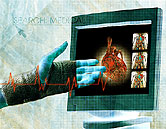BMI and age independently linked to diastolic dysfunction after anthracycline chemotherapy
TUESDAY, Aug. 11, 2015 (HealthDay News) — Diastolic dysfunction (DD) frequently develops after anthracycline chemotherapy for breast cancer, according to a study published online July 16 in The Oncologist.
José M. Serrano, M.D., from Hospital Universitario de Fuenlabrada in Madrid, and colleagues conducted an observational cohort study involving 100 consecutive patients receiving anthracycline-based chemotherapy for breast cancer. Clinical evaluation, echocardiogram, and measurement of cardiac biomarkers were conducted at baseline, the end of anthracycline-based chemotherapy, and at three and nine months after anthracycline-based chemotherapy. Fifteen patients receiving trastuzumab had additional follow-up at six and 12 months after the last dose of anthracycline-based chemotherapy. Fifteen patients with baseline DD were excluded from the study.
The researchers found that 57.6 percent of patients developed DD by the end of follow-up (median, 12 months). DD was persistent and reversible in 73 and 27 percent of patients, respectively. Cardiotoxicity developed in four patients (three had left ventricular systolic dysfunction, one had sudden cardiac death). During follow-up, none of the patients with normal diastolic function developed systolic dysfunction. Body mass index and age were independently related to the development of DD, with odds ratios of 1.19 and 1.12, respectively.
“Development of diastolic dysfunction after treatment with anthracycline or anthracycline-plus trastuzumab chemotherapy is common,” the authors write.
Copyright © 2015 HealthDay. All rights reserved.








